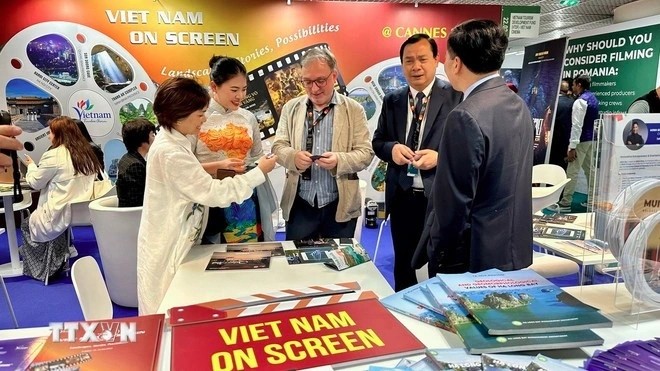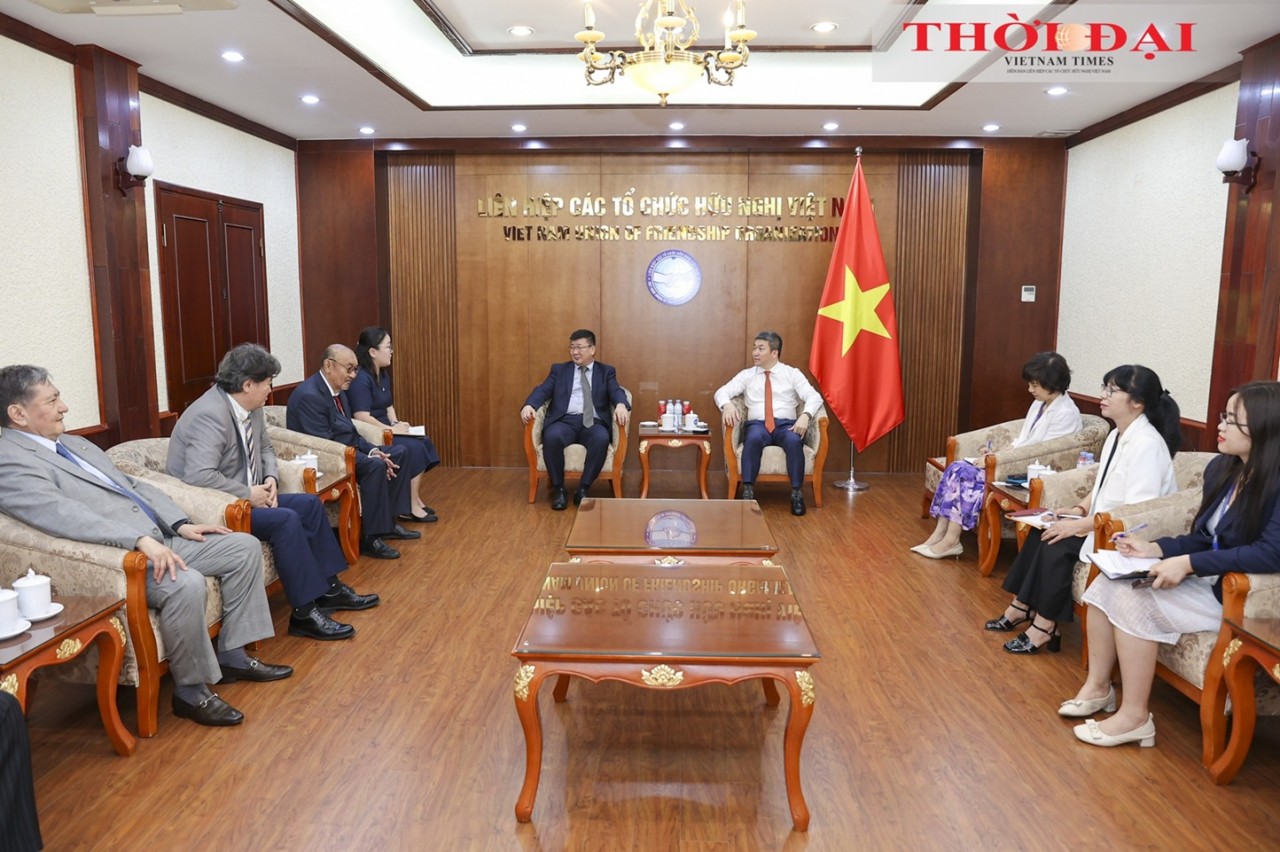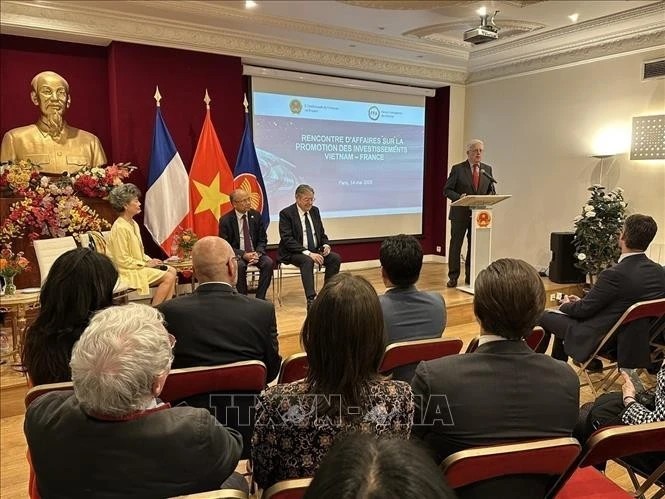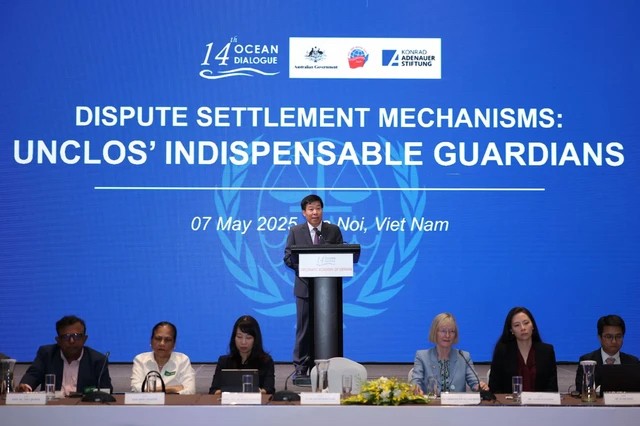Vietnam News Today (Nov. 1): US-Vietnam Business Summit Opens Up Prospects For Stronger Bilateral Trade
| Vietnam News Today (Nov. 1) notable headlines US-Vietnam Business Summit opens up prospects for stronger bilateral trade Vietnam anticipating opportunities of semiconductor industry Vietnam, Mongolia step up efforts to take traditional friendship to new heights Ample room for investment in Mekong Delta: Official Vietnam export and import of goods exceeds US$550 billion Ministry encourages mask-wearing, disinfection given downgraded COVID-19 status HCM City’s economy growing in 10 months Green production now inevitable for Vietnamese exporters Hoan Kiem lake space, Old Quarter recognized city-level tourist area |
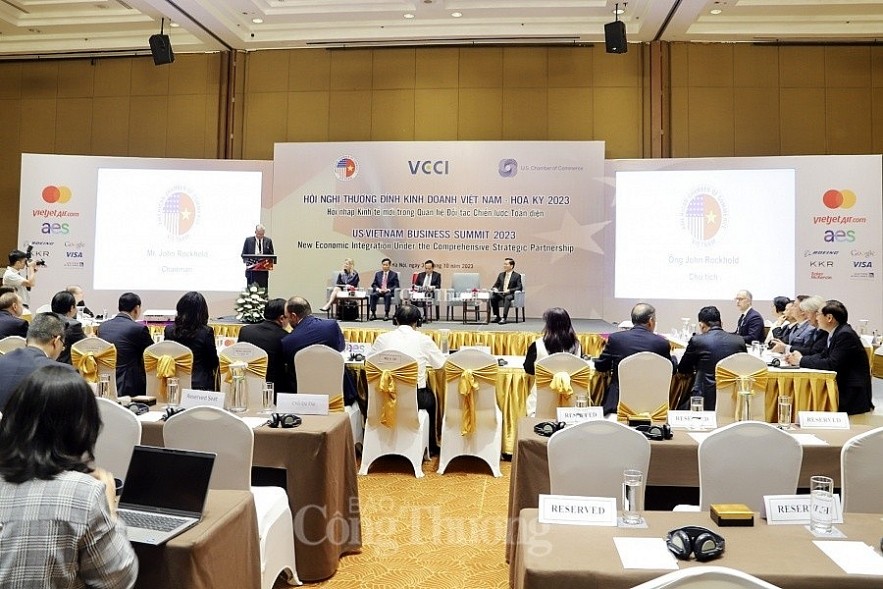 |
| An overview of the US-Vietnam Business Summit (Photo: congthuong.vn) |
US-Vietnam Business Summit opens up prospects for stronger bilateral trade
The US-Vietnam Business Summit opened in Washington D.C. on October 31, with the event creating opportunities to raise bilateral trade and facilitate further foreign direct investment (FDI) attraction into Vietnam.
The function was jointly held by the Vietnam Chamber of Commerce and Industry (VCCI), the American Chamber of Commerce in Hanoi (AmCham), and the American Chamber of Commerce in Washington.
The occasion primarily focused on discussing Vietnamese priority goals, including the removal of bottlenecks in resource mobilization, production, and business, as well as meeting the demand for energy development and accelerating the transition to clean and renewable energy, cited VOV.
Top priority has also been given to promoting innovation in the health sector, fully tapping into the potential of the digital economy, upgrading from frontier market to emerging market, and boosting both sustainable investment and supply chain integration.
According to details given by insiders, the recent upgrade of US-Vietnam relations to a comprehensive strategic partnership has marked a new era in stepping up bilateral ties between the two sides.
Currently, the US represents Vietnam's second largest trading partner and biggest export market. Meanwhile, the nation has become one of the US’ top 10 trading partners with the bilateral ties between the two countries expected to grow rapidly moving forward.
Vietnam anticipating opportunities of semiconductor industry
Thorough preparations, especially in human resources training, are needed for Vietnam to anticipate opportunities of the semiconductor industry expected to continue growing rapidly in the coming time.
According to experts, with many advantages, Vietnam is emerging as a key market for large global semiconductor manufacturers.
In September, Hana Micron, a major business in the Republic of Korea (RoK)’s semiconductor industry, inaugurated a semiconductor manufacturing factory in Bac Giang province, the first of its kind in the northern region. With this project, Hana Micron’s total investment in Vietnam now stands at US$600 million . This year, the company’s revenue is expected to reach US$300 million. It plans to raise its investment to over US$1 billion by 2025. At that time, the factory was set to gain US$800 million in revenue and create over 4,000 jobs.
One month later, RoK's Amkor Technology, Inc., a global semiconductor packaging and test service provider, inaugurated its factory in Bac Giang’s neighboring province of Bac Ninh.
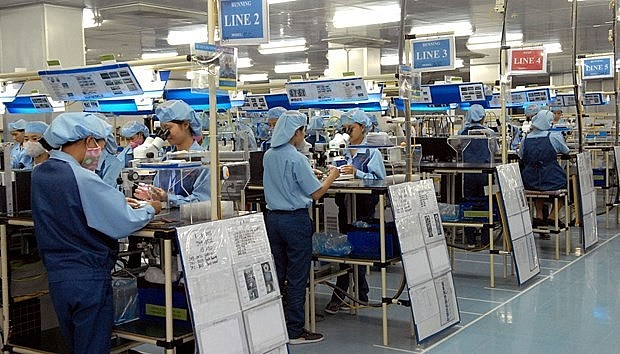 |
| With many advantages, Vietnam is emerging as a key market for large global semiconductor manufacturers (Photo: VNA) |
Amkor Technology Vietnam, located at Yen Phong II-C with a total investment of US$1.6 billion by 2035, is one of the largest semiconductor manufacturing plants in Vietnam, according to VNA.
Recently, Vietnam’s National Innovation Centre (NIC) signed memoranda of understanding with three major US partners, namely Synopsys, Cadence Design Systems, Inc., and the University of Arizona. In particular, the NIC's cooperation with Synopsys and the University of Arizona focuses on human resources development for the semiconductor industry in Vietnam, while its cooperation with Cadence involves promoting design capacity and developing semiconductor products in the country.
In addition, the Ministry of Education and Training also signed a memorandum of understanding with Intel Corporation on developing human resources for high-tech industries.
Several technology units and enterprises such as Viettel, FPT, and CMC have also researched, designed, and manufactured integrated circuits (ICs), which is considered a way for Vietnam to participate more deeply in the global semiconductor industry.
Determining human resources training as a fundamental issue for this industry, the Government has assigned the Ministry of Planning and Investment, the Ministry of Information and Communications, and related ministries and sectors to develop an action programme on developing the sector in Vietnam, and build a human resources development project with a goal of forming a contingent of 50,000 engineers for it by 2030.
Vietnam, Mongolia step up efforts to take traditional friendship to new heights
President Vo Van Thuong and his spouse have invited their Mongolian counterparts to visit Vietnam, expressing a desire to strengthen the traditional friendship between the two sides for comprehensive and substantive development, thereby bringing bilateral ties to new heights.
President of Mongolia Ukhnaagiin Khurelsukh and his spouse will therefore pay a State visit to Vietnam from November 1 to November 5.
This marks the first official visit to the country and also the first one to a Southeast Asian nation made by the Mongolian President since taking office.
Earlier in January, 2010, President Khurelsukh visited Vietnam whilst in the role of General Secretary of the Mongolian People's Party. He also played an active role in promoting the establishment of a new relationship framework with the Vietnamese side when he was both Deputy Prime Minister and Prime Minister of Mongolia.
The state visit by Mongolian President Khurelsukh and his wife will make an important contribution to strengthening the traditional friendship that exists between the two countries, thereby continuing to boost the development of bilateral relations in more substantive fields. This will be in accordance with the capabilities and needs of both sides, thereby meeting the interests and aspirations of the people of each country towards the 70th anniversary of both nations’ diplomatic relations.
After nearly 70 years since the establishment of diplomatic ties, the time-honoured friendship that exists between the two countries is constantly being strengthened and developed amid international and regional situations continuing to record many fluctuations.
The Vietnamese side consistently values and wishes to further deepen traditional friendly relations with Mongolia, while the Mongolian side attaches great importance to its relationship with Vietnam, viewing the nation as the most important partner in Southeast Asia.
Recent times has seen delegation exchanges and high-level meetings between the two countries regularly maintained, with many visits being conducted by senior leaders in 2013, 2017, 2019, 2022, and 2023.
As a result, mutual understanding and trust alongside all-around co-operation between the two countries have been strengthened.
Most notably, security and defence linkages are consistently viewed as an important pillar as part of the overall bilateral relationship.
Regarding economic ties, the two countries signed an agreement on trade co-operation in 1996. Due to many objective reasons, especially geographical location and transportation, joint economic and trade collaboration has been maintained at a modest level.
Bilateral trade exchange reached roughly US$50 million in 2020, about US$80 million in 2021, US$85 million in 2022, and US$76 million during the past eight months of this year.
The country primarily exports agricultural products and food, especially modern medicine from Mekopharm, Bidipharm, Hau Giang, Habaco, Saigon tobacco, G7 coffee, dried noodle, and Saigon beer.
Mongolian export staples to the Vietnamese market include white horse plasters, sheep wool carpets, fine goat hair products, and products made from leather.
The two sides are in the process of making greater efforts to expand the products that they have strengths in, such as Vietnamese agricultural, aquatic, and consumer products, as well as Mongolia's cattle meat and footwear products.
Regarding co-operation at international and regional forums, the two sides maintain effective and substantive ties and regularly support each other in international and regional issues of common concern.
Mongolia has historically supported the country, including Vietnamese accession to the WTO, the nation's bid to become a non-permanent member of the UN Security Council for the 2008 to 2009 and 2020 to 2021 terms, its efforts to join the UNESCO Executive Council for the 2010 to 2013 term, and to become a member of the UN Commission on International Trade Law (UNCITRAL) for the 2019 to 2025 term.
It also backs the Vietnamese candidate for the Commission on the Limits of the Continental Shelf (CLCS) for the 2023 to 2028 term, VOV reported.
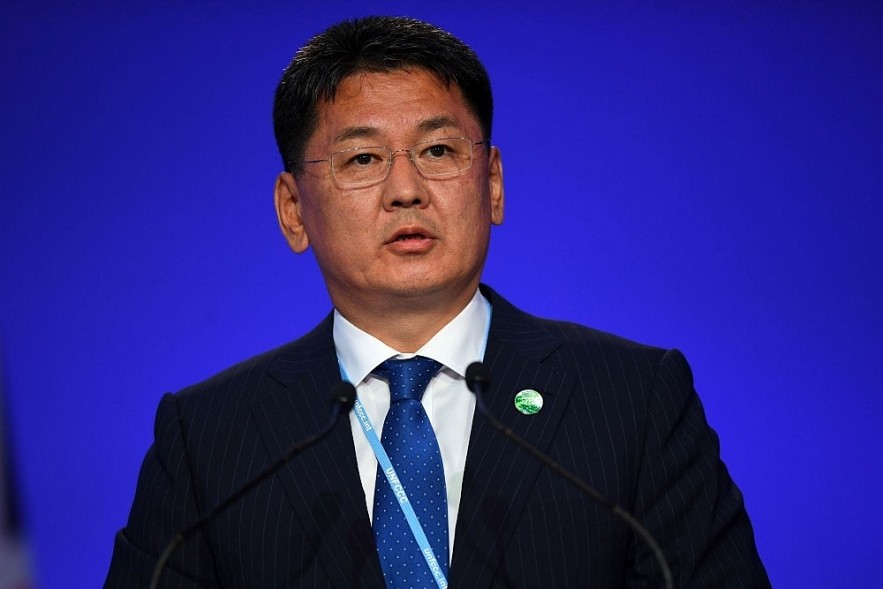 |
| Mongolian President Ukhnaagiin Khurelsukh (Photo: Getty Image) |
The Vietnamese side supports Mongolia in joining the UN Economic and Social Council (ECOSOC) Executive Committee for the 2010 to 2013 term, whilst it stands ready to help Mongolia further expand ties with ASEAN member states and join the Asia-Pacific Economic Cooperation (APEC) when this organization admits new members.
On the occasion of his attendance at the World Economic Forum in Tianjin in China in June, at a bilateral meeting with Mongolian Prime Minister Oyun-Erdene Luvsannamsrai, Prime Minister Pham Minh Chinh affirmed that Vietnam consistently places importance to and wishes to continue to consolidate and strengthen the sound traditional friendship between the two countries.
He suggested that the two sides strive to intensify delegation exchanges, both at central and local levels, thereby further deepening mutual understanding and trust, whilst taking measures to create more favorable conditions for exchanges and interactions between the two countries' people.
Amid global and regional fluctuations, strengthening mutual relations is important to the people of the two countries. The Vietnamese side welcomes and remains ready to serve as a bridge to support Mongolia in expanding and boosting ties with ASEAN for the cause of peace and prosperity throughout the region and the wider world.
In response, Mongolian Prime Minister Oyun-Erdene Luvsannamsrai affirmed that Mongolia is proud to be a friend of Vietnam, viewing it as a brave and highly independent nation. Indeed, the country has an increasingly strong international position and reputation in the region and the world and is viewed as one of the important economic engines of Asia.
PM Luvsannamsrai therefore proposed that the two sides seek to enhance the role of the Mongolia - Vietnam Intergovernmental Committee and co-operation mechanisms between the two sides. He emphasized that Mongolia desires to further expand and bolster co-operative relations with Vietnam, especially in the fields of transportation, railways, aviation, people-to-people exchanges, and tourism.
During President Ukhnaagiin Khurelsukh's upcoming visit to Vietnam, the leaders of the two countries will outline important orientation for activities commemorating the 70th anniversary of their diplomatic ties in 2024, as well as propelling the traditional relationship between the two countries forward in the time ahead.
Ample room for investment in Mekong Delta: Official
The Mekong Delta region, the country’s rice and fruit granary, holds huge potential for further investment in agriculture, Deputy Minister of Agriculture and Rural Development Tran Thanh Nam said on October 30.
At a conference held in Can Tho city to promote agriculture investment in the region, Nam highlighted that as an important agricultural economic hub in the country, it makes up more than 33% of the nation’s GDP from agriculture, and has lured investment to areas of its strengths, namely fruit, rice and aquatic products.
However, Nam suggested domestic and foreign firms consider injecting capital in the region’s maritime cultivation and agricultural services such as plant protection products and animal feed, and agricultural by-products.
Calling on enterprises to step up investment in logistics for agricultural products, Nam said that his ministry is submitting to the Prime Minister a project on developing the logistics system to improve the quality and competitive edge of Vietnamese farm produce by 2030 with a vision to 2050, with a focus given to development of three kinds of logistics centers – in material areas that features a warehouse and provides technical consultancy for farmers, one big cities for deep processing, and in border gates for goods storage for export, cited VNA.
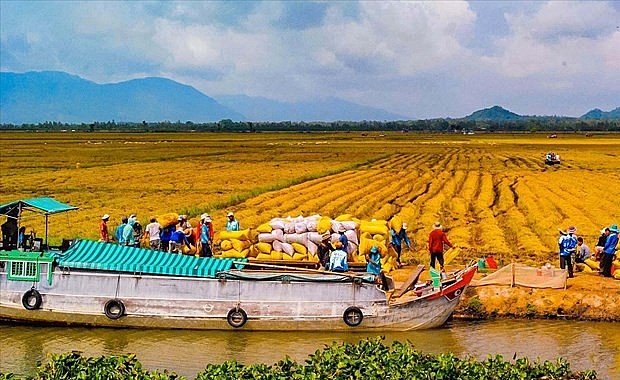 |
| The Mekong Delta region is the country’s rice and fruit granary. (Photo: nongnghiep.vn) |
The logistics centers are expected to help reduce production costs and improve income for both businesses and farmers, Nam added.
The Ministry of Agriculture and Rural Development (MARD) is giving priority to investments that help enhance the values of agricultural products as well as develop green economy and digital economy, he said, asking localities and businesses to focus on branching out human resources and improving production capacity to ensure that they are able to join the international market.
Nam also expressed his hope that enterprises will join hands with the State to build a professional workforce, invest in international-standard agricultural processing, and develop an agricultural value chain to create high-value products and form a strong linkage with farmers.
At the event, businesses discussed mechanisms and incentives when they land investments in the Mekong Delta region’s agricultural sector.
AusCham Vice President David Whitehead said he hopes local authorities will understand investors’ need and create the best conditions for them to operate there, suggesting they give detailed instruction on investment registration process, land-use registration process and timeline for investment plans, as well as remove bottlenecks in a timely fashion.
Meanwhile, General Director of BODE Group Nguyen Thi Hang recommended the MARD, competent ministries and localities publicize planning, land use plans, prioritized investment projects, and special incentives in the long term.
Vietnam export and import of goods exceeds US$550 billion
Vietnam's export and import turnover of goods exceeded the mark of US$550 billion after 10 months of this year.
Data newly released by the General Statistics Office showed that Vietnam's export and import turnover of goods surpassed the mark of US$550 billion after 10 months of this year.
Specifically, merchandise export turnover in the past month was estimated to reach US$32.31 billion, up 5.3 per cent compared to the previous month.
Of this, the domestic economic sector reached US$8.49 billion, an increase of 5.7 per cent; the foreign-invested sector (including crude oil) reached US$23.82 billion, up 5.2 per cent.
Compared to the same period last year, the export turnover of goods for this month rose by 5.9 per cent, of which the domestic economic sector increased by 15.1 per cent, and the foreign-invested sector (including crude oil) grew by 3 per cent.
In the first 10 months of 2023, merchandise export turnover was estimated to reach US$291.28 billion, down 7.1 per cent over the same period last year.
Of this, the domestic economic sector reached US$77.09 billion, down 4.1 per cent, accounting for 26.5 per cent of the total export turnover; the foreign-invested sector (including crude oil) reached US$214.19 billion, down 8.1 per cent, accounting for 73.5 per cent.
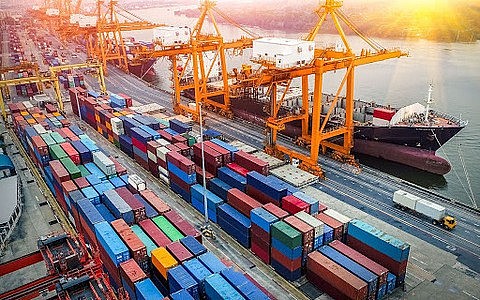 |
| Merchandise export turnover in October is estimated to reach US$32.31 billion. Photo: tapchicongthuong.vn |
Conversely, the import turnover of goods in October was estimated to reach US$29.31 billion, up 2.9 per cent compared to the previous month.
Of this, the domestic economic sector reached US$10.36 billion, up 3.7 per cent; the foreign investment sector reached US$18.95 billion, up 2.4 per cent.
Compared to the same period last year, import turnover for the month rose by 5.2 per cent, of which the domestic economic sector increased by 8.5 per cent; the foreign-invested sector grew by 3.5 per cent, VNS reported.
In the first 10 months of this year, the import turnover of goods was estimated to reach US$266.67 billion, down 12.3 per cent over the same period last year.
Of this, the domestic economic sector reached US$95.08 billion, down 10.3 per cent; the foreign-invested sector reached US$171.59 billion, down 13.3 per cent.
Regarding the export and import market of goods over the 10 months, the US was Vietnam's largest export market with an estimated turnover of US$78.6 billion. China was Vietnam's largest import market with an estimated turnover of $89.8 billion.
The trade balance of goods in October was estimated to have a surplus of US$3 billion. Overall, the trade balance of goods was estimated to have a surplus of US$24.61 billion for the first 10 months of this year, whereas the same period last year saw a trade surplus of US$9.56 billion.
Of this, the domestic economic sector's trade deficit was US$17.99 billion; the foreign-invested sector (including crude oil) had a trade surplus of US$42.6 billion.
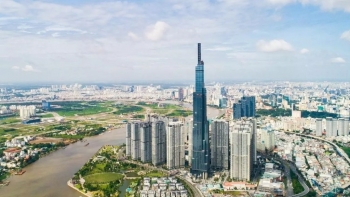 | Vietnam News Today (Oct. 29): Vietnam’s Growth Engine is Still in Full Swing Vietnam News Today (Oct. 29): Vietnam welcomes over 1 million int'l visitors in fourth consecutive month; Vietnam’s growth engine is still in full swing; PM: ... |
 | Vietnam News Today (Oct. 30): Vietnam, EU Hold 4th Joint Committee Meeting in Brussels Vietnam News Today (Oct. 30): Success in COVID-19 combat reflects Vietnam’s mettle, wisdom; Vietnam, EU hold 4th Joint Committee meeting in Brussels; HCM City promotes ... |
 | Vietnam News Today (Oct. 31): Vietnam a Potential Investment Market For Retailers Vietnam News Today (Oct. 31): WHO hails Vietnam’s effective control of COVID-19 pandemic; Vietnam a potential investment market for retailers; Trade turnover in October continues ... |
In topics
 National
National
Vietnam News Today (Jun. 2): Vietnamese Trade Mission Sounds Out Business Opportunities in United States
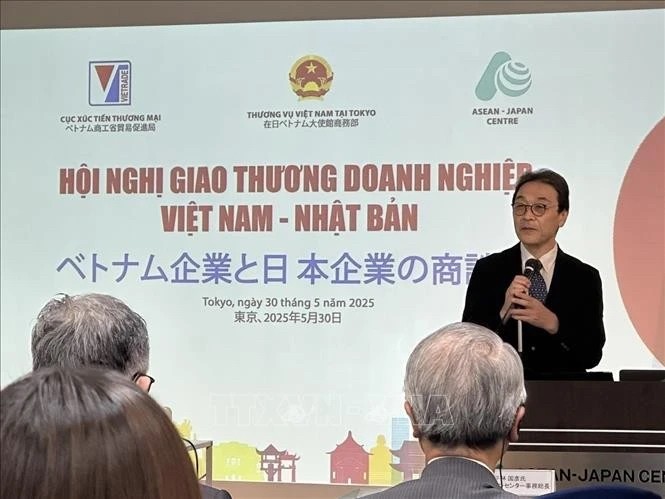 National
National
Vietnam News Today (Jun. 1): Vietnamese, Japanese Firms Foster Partnership
Recommended
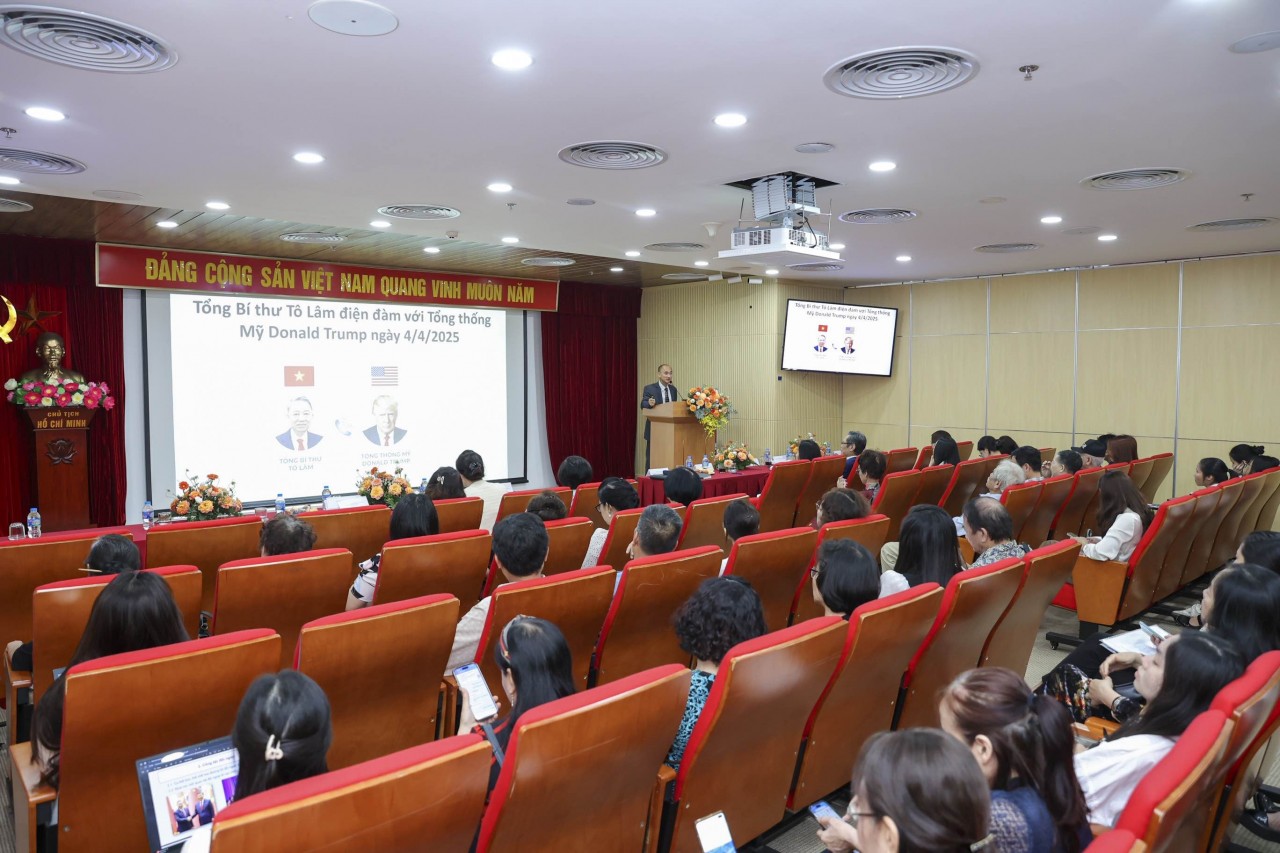 National
National
Vietnam News Today (May 29): Vietnam and Hungary to Expand Cooperation into New Areas
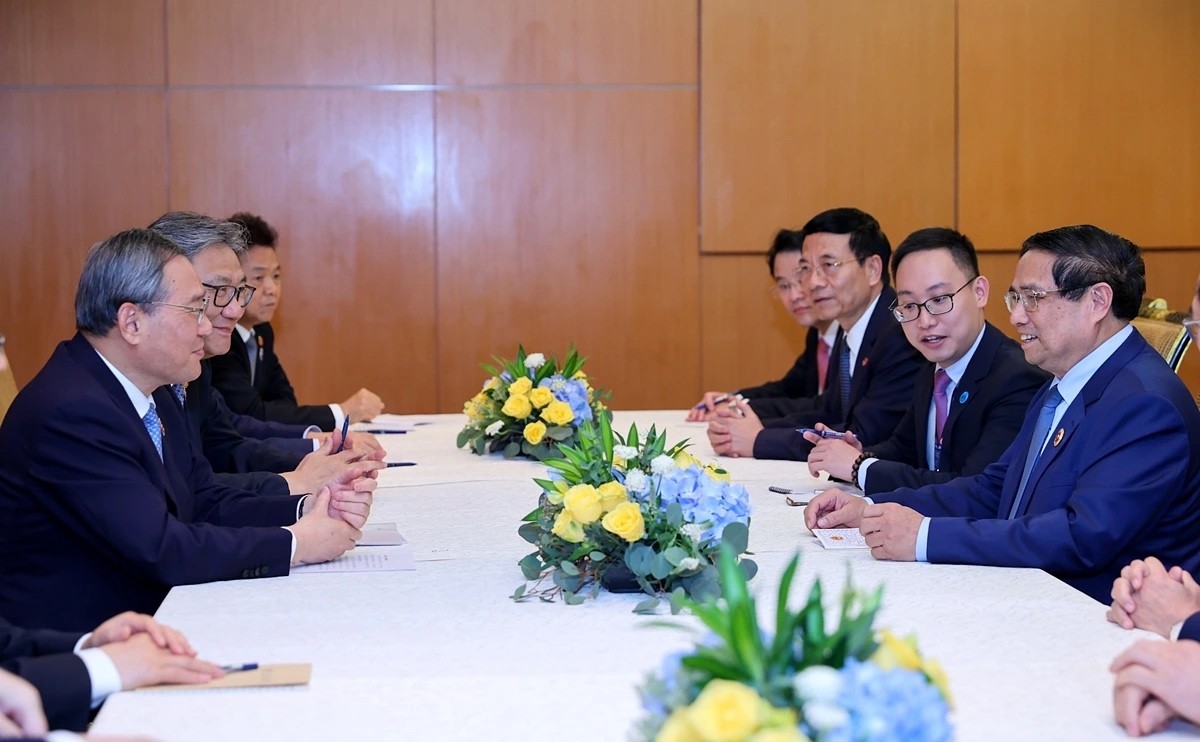 National
National
Vietnam News Today (May 28): Vietnam and China Discuss Strategic Cooperation Orientations
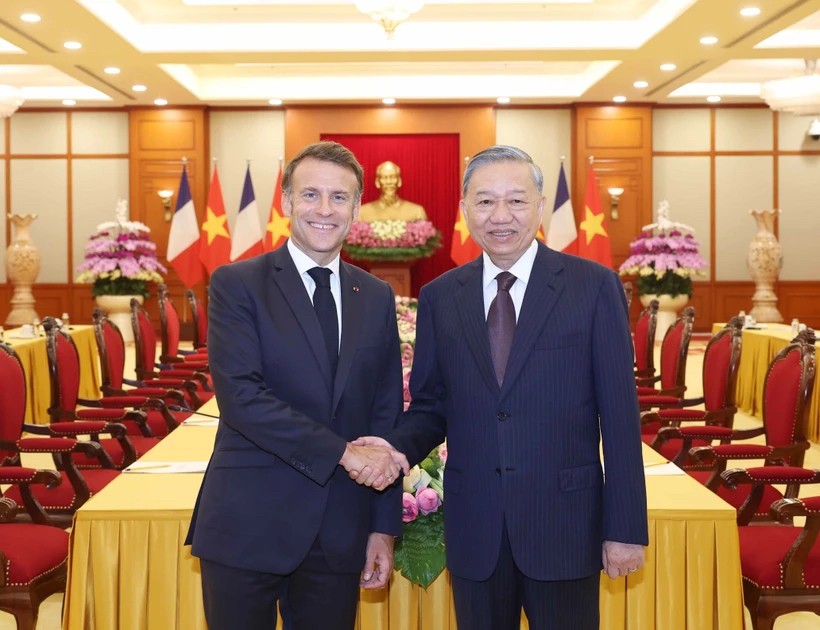 National
National
Vietnam News Today (May 27): Vietnam Treasures Multifaceted Collaboration with France
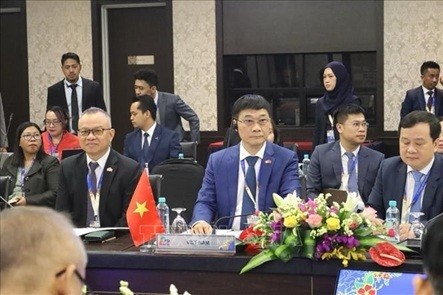 National
National
Vietnam Commits to Building an Inclusive, Sustainable and Cohesive ASEAN
Popular article
 National
National
Vietnam News Today (Jun. 2): Vietnamese Trade Mission Sounds Out Business Opportunities in United States
 National
National
Vietnam News Today (Jun. 1): Vietnamese, Japanese Firms Foster Partnership
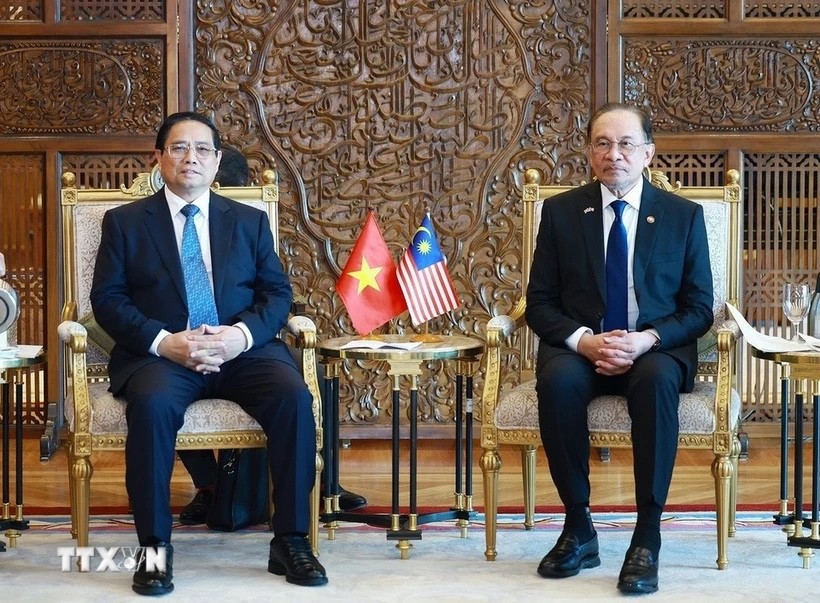 National
National
Vietnam News Today (May 31): Vietnam Strongly Supports Laos’s National Development
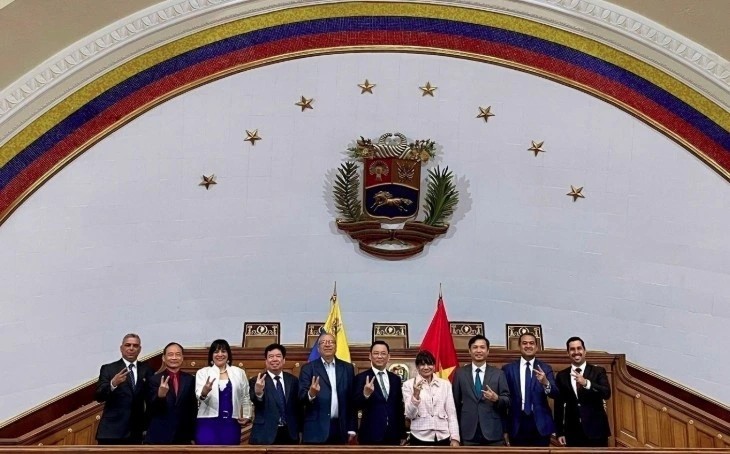 National
National




